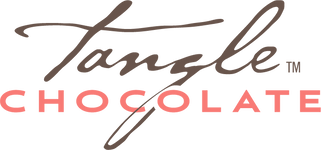FOUR WAYS THAT YOUR CHOCOLATE MAY BE COMPROMISING YOUR VALUES
Jun 04, 2020
You are someone who loves delighting everyone from your child’s violin teacher to your sweetheart with some special chocolate when they least expect it. And you want to choose chocolate that makes the world better as well as brightens the recipient’s day. How can you know that the chocolate you buy is in alignment with your values? Start with these four questions.
HOW DO I TELL IF THE GROWERS ARE FAIRLY PAID?
We have become used to checking for a “Fair Trade” certification on many products that we buy, thinking that its presence is necessary to ensure that the workers involved are paid fairly. There are actually a number of chocolate makers, including Tangle Chocolate, who make sure that wages paid to cacao growers exceed the fair trade benchmark, but there is currently no standardized way to communicate that to consumers. If a chocolate that seems highly ethical does not have a Fair Trade certification on its packaging, contact the company. They will be happy to talk to you about it if they have as much integrity as you think they do. Check back for more information about wages in the chocolate industry in other articles here, because it’s a huge and critical subject.
IF I BUY ONLY CERTIFIED ORGANIC CHOCOLATE, AM I CUTTING OUT THE SMALL FARMER WHOM I WANT TO SUPPORT?
You might be. There are many farmers who live in remote villages where it is impossible to buy pesticides and chemical fertilizers even if they wanted to, but if their farms are not inspected by a certifying body, they can’t claim that their cacao is organic. Or consider the thousands of small growers who practice organic farming but have a harvest that is too small to offset the cost of certification and its annual fees. Another less common example of non-certified yet still organic cacao comes from Tangle Chocolate’s cacao supplier, Uncommon Cacao, who several years ago were lucky enough to obtain some Central American cacao beans that were from wild cacao trees deep in the jungle. The cacao pods were harvested by indigenous people from their dugout canoes. We’re gonna bet those were organic beans, aren’t you, even though they didn’t have the sticker? We all want top-quality chocolate with ingredients that were not exposed to chemical fertilizers and pesticides...and we want to support small farmers. Some lines of chocolate, like Tangle Chocolate, choose not to be certified organic so that they can continue to buy from growers like those just described, and you might feel even better about buying their chocolate than you do about buying only certified organic brands. Most small chocolate makers know exactly where every bag of their beans comes from. If you see a chocolate that you want to buy but it’s not certified organic, call the maker. If it’s a place you’d want to do business with, they’ll be happy to answer your questions.
SHOULD I CARE IF THE CHOCOLATE IS MADE BY THE SAME COMPANY WHOSE NAME IS ON THE LABEL?
You may have read that question and gone “Huh? That’s a thing?” Yes, it is. If you’re really into chocolate, the answer is yes, you want the people who package the chocolate to also be the ones who make it. What you want is called bean-to-bar chocolate, meaning that the maker starts with bags of cacao beans and ends up with a finished chocolate. That’s what we make at Tangle Chocolate. Bean-to-bar chocolate is most likely fresher than chocolate that is started in one place and finished somewhere else because the middle steps of warehousing, selling, delivering, and re-molding are eliminated. It’s also likely better, not only because the maker is staking their name and reputation on it, but also because the maker is demonstrating their passion about chocolate by going to the trouble of crafting it themselves. They also have direct control over the ingredients. There is a lot of chocolate out there that could be mistaken for bean-to-bar chocolate, and to further confuse things, the other kind of chocolate (called coverture in the industry) legally may include the words artisan, craft, small batch, or handmade on its packaging. Chocolate may come with a high price tag, gorgeous wrapping or homemade look, yet not be made by the people who are selling it. If a business makes its own chocolate, the label will say bean-to-bar because it’s something to be proud of. If the label doesn’t say it, it isn’t true.
WHAT DO I DO WITH THE PACKAGING WHEN I’M FINISHED?
We at Tangle Chocolate are going to assume that you want to compost, reuse, or recycle packaging as often as possible, and we are doing our best to make that happen. Our boxes and the padding inside them are recyclable...though customers tell us they also have been repurposing the boxes for everything from jewelry to favorite fortune cookie notes. Here are some things to think about when considering the sustainability of packaging.
First, you know the foil-lined paper that is ubiquitous in chocolate bar wrapping? Did you know that it is not recyclable even though both foil and paper are themselves recyclable? That’s because the two very thin layers are fused together in a way that is hard to undo, making it impossible to put the paper and aluminum into their proper recycling streams. In their fused state, they are actually a contaminant in recycling. Sadly, paper-lined foil belongs in a landfill.
Second, it’s hard to come by chocolate companies that use compostable packaging. Why? Most chocolate is sold in brick-and-mortar stores where it may be on the shelves for months before it is purchased. So it needs an effective air and water barrier, and that means either the foil-lined paper just discussed or a cellophane/plastic film. There are some compostable plastic-like films in use, but as of this writing, they do not provide the same protection that plastic does.
Which brings us to the last thing to consider about chocolate packaging. Whether it’s recyclable, compostable, or neither, you must be religious about actually putting the packaging where it belongs. If something that can be recycled ends up in the normal garbage bin, well, it’s going to the landfill. All too often, compostable packaging ends up in a recycling bin by mistake, which can contaminate the whole batch because the compounds used in compostable and plastic goods are not compatible. And that contaminated batch will end up in a landfill as well, which is the opposite intention of the chocolate manufacturer and conscious consumer!
At Tangle Chocolate, we believe that every purchase we make - whether it be of consumable or non-consumable goods - can help or harm. We’re with you in moving towards one hundred percent sustainability.

